The compact car segment has always been a battleground for manufacturers seeking to deliver the perfect balance of utility, performance, and innovation. In this article, we pit two strong contenders against each other: the Hyundai i30 Kombi and the Kia Ceed. Both vehicles promise style and functionality, but how do they stack up in terms of technical specifications and innovative features? Let’s dive in.
Hyundai i30 Wagon vs Kia Ceed – Differences & prices compared
Everyday use, family trips or long-distance drives – here’s where the differences show.
Discover whether Hyundai i30 Wagon or Kia Ceed fits your lifestyle better.
Design and Dimensions
Starting with dimensions, the Hyundai i30 Kombi measures 4,585 mm in length, 1,795 mm in width, and 1,475 mm in height. It offers a spacious trunk capacity of up to 602 liters, making it an excellent option for families or those who need extra cargo space. Meanwhile, the Kia Ceed, in its hatchback form, is slightly shorter, measuring 4,315 mm and 4,325 mm depending on the specific variant. Its trunk capacity stands at 357 liters, which is still respectable but noticeably less than that of the i30 Kombi.
Powertrains and Performance
When it comes to powertrains, both the Hyundai i30 Kombi and Kia Ceed offer a choice between petrol and mild-hybrid petrol engines. In the i30 Kombi, you can find a range of engine options, with power outputs of 100 HP (74 kW) and 140 HP (103 kW). The peak torque figures range from 172 Nm to 253 Nm, with fuel consumption figures as low as 5.6 L/100 km. Acceleration from 0-100 km/h is achieved in as little as 9.8 seconds, with a top speed of up to 197 km/h.
On the other hand, the Kia Ceed also offers similar power ratings with its 100 HP and 140 HP engine options, but its fuel consumption is slightly higher, ranging from 6.0 to 6.4 L/100 km. The Ceed boasts a comparable acceleration time from 0-100 km/h in as little as 9.5 seconds, showing its capability to perform as efficiently as the i30 Kombi.
Transmission and Drive
Both models are equipped with front-wheel drive and offer a choice between a manual gearbox and an automatic transmission with dual-clutch technology. The Hyundai i30 Kombi’s setup provides smooth shifting and responsive acceleration, while the Kia Ceed's transmission is equally polished, providing an engaging driving experience, especially in urban settings.
Safety and Technology Features
Safety remains a priority for both brands, with advanced safety features and driver-assistance systems being a significant part of each vehicle's offering. The i30 Kombi is equipped with Hyundai’s SmartSense safety suite, which includes features like Forward Collision-Avoidance Assist, Lane Keeping Assist, and Driver Attention Warning. The Kia Ceed also incorporates similar technology, featuring the Kia Drive Wise package that comes with advanced safety systems designed to mitigate risks on the road.
Interior Quality and Comfort
Inside, both models provide a seating capacity for five passengers, emphasizing spaciousness and comfort. The i30 Kombi's interior boasts high-quality materials with a modern layout that is easy to navigate. Key tech features include a touchscreen infotainment system compatible with Apple CarPlay and Android Auto.
Similarly, the Kia Ceed offers an equally sophisticated cabin with ample tech features, including a user-friendly touchscreen interface. Both cars prioritize passenger comfort, with supportive seats and a focus on eliminating road noise.
Pricing Analysis
Pricing for the Hyundai i30 Kombi starts at €28,590, while the higher-spec variants can go up to €34,650. The Kia Ceed, on the other hand, has a more varied pricing structure, starting at €25,590 and ranging up to €35,090 depending on the trim level. This pricing means the Ceed might offer more competitive entry-level options compared to the i30 Kombi.
Conclusion
In conclusion, both the Hyundai i30 Kombi and Kia Ceed have their distinct advantages, catering to different types of drivers. The i30 Kombi excels in utility and trunk space, making it a better choice for those needing room for cargo. Conversely, the Ceed offers a slightly lower price point and a fun-to-drive nature that appeals to the spirited driver. Ultimately, the choice will depend on individual preferences, with both vehicles promising reliability and a host of innovative features to enhance the driving experience.
Here’s where it gets real: The technical differences in detail
Costs and Efficiency:
When it comes to price and running costs, the biggest differences usually appear. This is often where you see which car fits your budget better in the long run.
Kia Ceed has a slight advantage in terms of price – it starts at 23500 £, while the Hyundai i30 Wagon costs 24800 £. That’s a price difference of around 1371 £.
Fuel consumption also shows a difference: Hyundai i30 Wagon manages with 5.70 L and is therefore minimal more efficient than the Kia Ceed with 6 L. The difference is about 0.30 L per 100 km.
Engine and Performance:
Power, torque and acceleration are the classic benchmarks for car enthusiasts – and here, some clear differences start to show.
Both models deliver identical power – 140 HP each.
In acceleration from 0 to 100 km/h, the Kia Ceed is barely noticeable quicker – completing the sprint in 9.50 s, while the Hyundai i30 Wagon takes 9.80 s. That’s about 0.30 s faster.
There’s no difference in top speed – both reach 197 km/h.
Both models offer the same torque – 253 Nm.
Space and Everyday Use:
Cabin size, boot volume and payload all play a role in everyday practicality. Here, comfort and flexibility make the difference.
Both vehicles offer seating for 5 people.
In curb weight, Kia Ceed is hardly perceptible lighter – 1298 kg compared to 1316 kg. The difference is around 18 kg.
In terms of boot space, the Hyundai i30 Wagon offers noticeable more room – 602 L compared to 395 L. That’s a difference of about 207 L.
In maximum load capacity, the Hyundai i30 Wagon performs clearly perceptible better – up to 1650 L, which is about 359 L more than the Kia Ceed.
When it comes to payload, Hyundai i30 Wagon hardly perceptible takes the win – 524 kg compared to 490 kg. That’s a difference of about 34 kg.
Who wins the race?
The Hyundai i30 Wagon proves to be leaves the rival little chance and therefore becomes our DriveDuel Champion!
Hyundai i30 Wagon is the better all-rounder in this comparison.
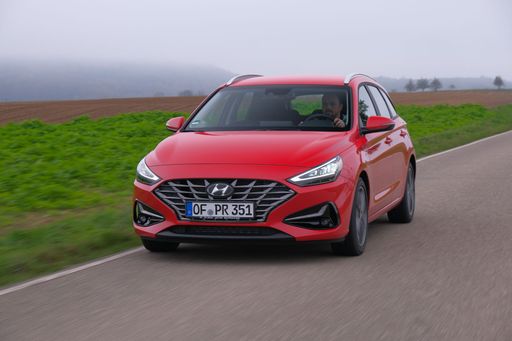 @ Hyundai Motor Company
@ Hyundai Motor Company
Hyundai i30 Wagon
Hyundai i30 Wagon
The Hyundai i30 Wagon offers a blend of practicality and style, making it a popular choice for families and those in need of extra space. Its sleek exterior and comfortable interior provide a pleasant driving experience, while advanced safety features ensure peace of mind on the road. The i30 Wagon stands out with its impressive fuel efficiency and reliability, catering to both urban and rural lifestyles.
details @ Hyundai Motor Company
@ Hyundai Motor Company
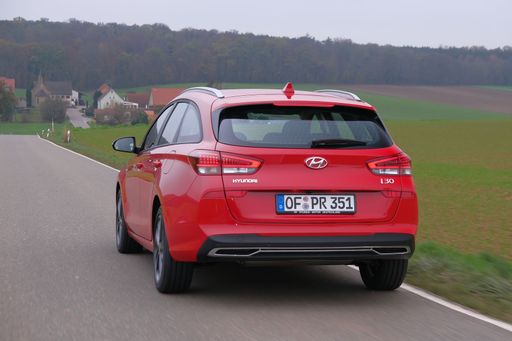 @ Hyundai Motor Company
@ Hyundai Motor Company
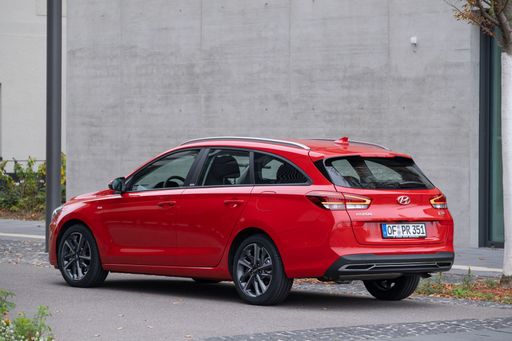 @ Hyundai Motor Company
@ Hyundai Motor Company
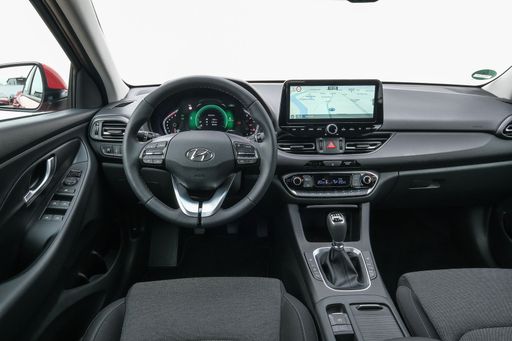 @ Hyundai Motor Company
@ Hyundai Motor Company
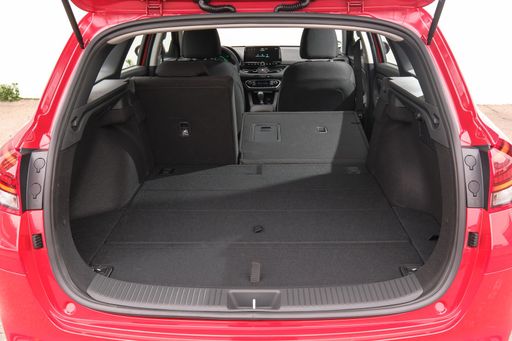 @ Hyundai Motor Company
@ Hyundai Motor Company
Kia Ceed
The Kia Ceed is a sensible, stylish hatchback that gives buyers more than they'd expect for the money, blending practical space with crisp, modern looks. It drives with measured confidence and comes loaded with user-friendly kit, so you can enjoy daily life behind the wheel without breaking into a sweat.
details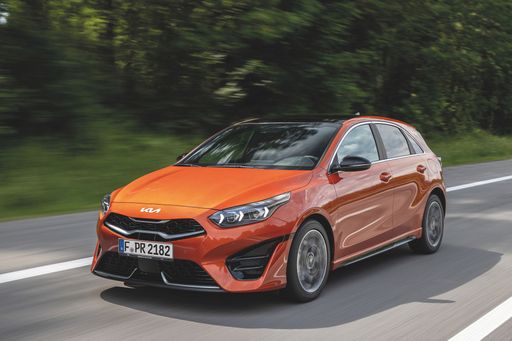 @ Kia Corporation
@ Kia Corporation
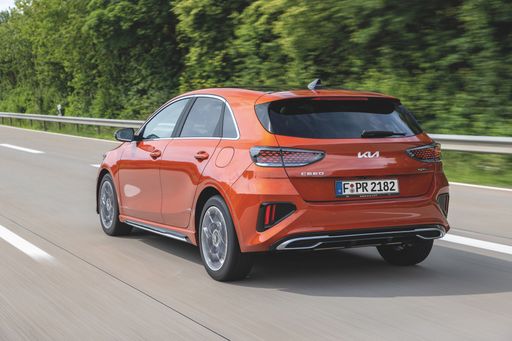 @ Kia Corporation
@ Kia Corporation
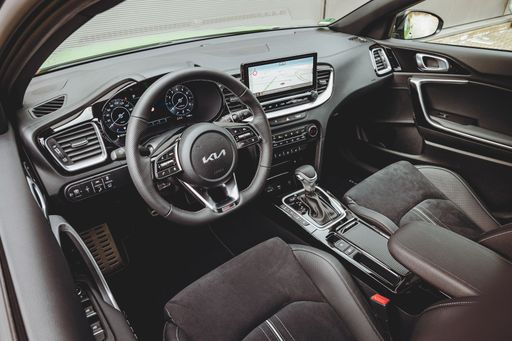 @ Kia Corporation
@ Kia Corporation
 @ Hyundai Motor Company
@ Hyundai Motor Company
|
 @ Kia Corporation
@ Kia Corporation
|
|
|
|
Costs and Consumption |
|
|---|---|
|
Price
24800 - 30100 £
|
Price
23500 - 26300 £
|
|
Consumption L/100km
5.7 - 6 L
|
Consumption L/100km
6 - 6.4 L
|
|
Consumption kWh/100km
-
|
Consumption kWh/100km
-
|
|
Electric Range
-
|
Electric Range
-
|
|
Battery Capacity
-
|
Battery Capacity
-
|
|
co2
130 - 136 g/km
|
co2
137 - 146 g/km
|
|
Fuel tank capacity
50 L
|
Fuel tank capacity
50 L
|
Dimensions and Body |
|
|---|---|
|
Body Type
Estate
|
Body Type
Hatchback
|
|
Seats
5
|
Seats
5
|
|
Doors
5
|
Doors
5
|
|
Curb weight
1316 - 1461 kg
|
Curb weight
1298 - 1372 kg
|
|
Trunk capacity
602 L
|
Trunk capacity
357 - 395 L
|
|
Length
4585 mm
|
Length
4315 mm
|
|
Width
1795 mm
|
Width
1800 mm
|
|
Height
1475 mm
|
Height
1447 mm
|
|
Max trunk capacity
1650 L
|
Max trunk capacity
1253 - 1291 L
|
|
Payload
439 - 524 kg
|
Payload
478 - 490 kg
|
Engine and Performance |
|
|---|---|
|
Engine Type
Petrol, Petrol MHEV
|
Engine Type
Petrol, Petrol MHEV
|
|
Transmission
Manuel, Automatic
|
Transmission
Manuel, Automatic
|
|
Transmission Detail
Manual Gearbox, Dual-Clutch Automatic
|
Transmission Detail
Manual Gearbox, Dual-Clutch Automatic
|
|
Drive Type
Front-Wheel Drive
|
Drive Type
Front-Wheel Drive
|
|
Power HP
100 - 140 HP
|
Power HP
100 - 140 HP
|
|
Acceleration 0-100km/h
9.8 - 13.3 s
|
Acceleration 0-100km/h
9.5 - 13.2 s
|
|
Max Speed
178 - 197 km/h
|
Max Speed
178 - 197 km/h
|
|
Torque
172 - 253 Nm
|
Torque
172 - 253 Nm
|
|
Number of Cylinders
3 - 4
|
Number of Cylinders
3 - 4
|
|
Power kW
74 - 103 kW
|
Power kW
74 - 103 kW
|
|
Engine capacity
998 - 1482 cm3
|
Engine capacity
998 - 1482 cm3
|
General |
|
|---|---|
|
Model Year
2024
|
Model Year
2024
|
|
CO2 Efficiency Class
D, E
|
CO2 Efficiency Class
E
|
|
Brand
Hyundai
|
Brand
Kia
|
What drivetrain options does the Hyundai i30 Wagon have?
Available configurations include Front-Wheel Drive.
The prices and data displayed are estimates based on German list prices and may vary by country. This information is not legally binding.
